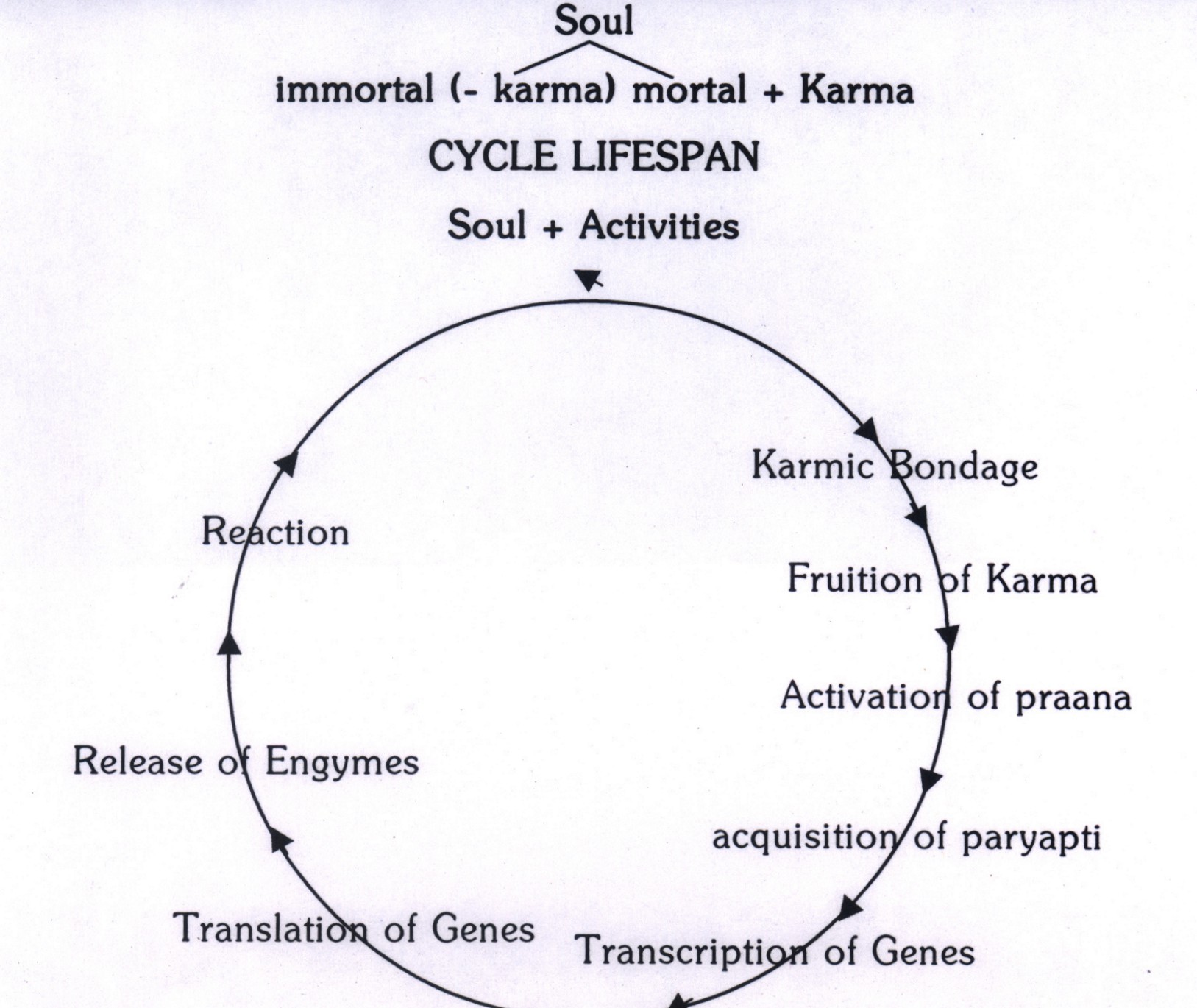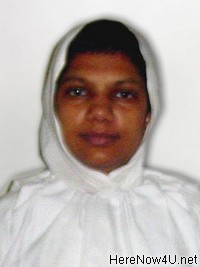We observe a great difference of lifespan among species and so also among the members of the species. What determines the length of life is a problem of the present research. Some men live more than 100 years, no mouse lives more than four years. Why is it that the two mammalian species so similar in many ways should have such a very different lifespan? The present study aims at solving the problem; what determines the lifespan of an organism and how is it determined?
Analysis of various factors that determine the lifespan both in the field of Jainism and science suggests that the possible factors can be divided into four kinds:
- Karma
- Prāṇa
- Genes and
- Other physical and environmental factors
According to Jainism, soul is immortal in nature but on account (life span determining karma - ayuśya karma) bondage of it takes birth and eventually die.[1] The karmic bondage occurs due to actions of the soul. The bondage of life span also takes place according to actions of soul. The bondage of future lifespan occurs during the last one-third or the last infra hour of the present life.[2] Each species has its own maximum and minimum life it enjoys on account of Karmic fruition. Before an organism dies i.e. in the last one-third of the present life, it binds the lifespan of next birth, which when comes into state of rise or a fruition a new lifespan begins. The fruition may be affected by time, place and so on.
Vitality (prāṇa) is another concept of Jainism to which a lifespan is closely related. When this vitality comes to end, the life span ends. There are ten kinds of vitality, out of which tenth i.e. life span (ayuśya prāṇa) vitality is responsible for the determinaton of the lifespan.[3] Prāṇa or vitality are psychic power, which needs material assistance for its functions to be done. This assistance is provided by (paryāpti). There are six kinds of bio-potential out of which the aliment bio-potential (āhārparyāpti) is the bio-potential, which provides the material assistance to lifespan vitality. Thus, it can be said that both life span vitality and its corresponding bio-potential (ahārparyāpti) work together to regulate the lifespan. Many a times prāṇa is also translated as breath. The ninth prāṇa is called swāshocswās prāṇa and its corresponding potential may also play a role in the regulation of life span as it is usually said to breathe long is to live long. Just as the plant when watered with sufficient amount of water grows well and healthy, so is the prāṇa, which in presence of oxygen it grows, more healthy and active. This supply of oxygen can be regulated through process called prāṇāyāma. Thus we see that prāṇa (vital energy) prāṇavāyu (breathing air or oxygen) and prāṇāyāma (regulation of air) are all interrelated.[4]
In the field of science, both nature and nurture are the factors which play a key role in each event of being's life. Nature refers to heredity and genes where as nurture refers to environment. A number of studies have come up that deals with the role that genes play in the lifespan determination and ageing.[5].
The nurture usually refers to environment. It includes not only environmental factors but also the physical, physiological causes of early death, body, size, sex, and sexual activity etc. The variability in the patterns of aging, among individuals within a species, especially in higher organisms, may not be due to only genetic differences but also due to differences in their socio-economic status, nutrition,[6] and types of stress such as temperature, radiation, pollution, and psychological stress [7] to which they are subjected to during their life span. Thus, in addition to genetic variants, environmental factors may also determine differences in maximum lifespan within the same population.
Genes and karma are similar in many ways. Karma is related to the prāṇa and karma also changes according to one's effort. It is also liable to change according to environment. Being subtle in nature karma can also be called as progenes too. Which gets mixed with grosser particles to be called as genetic material, Again genes are affected by environment. āharparyapti a material constitution of life-span vitality is a chief component of genes. And it is also selected according to fruition and karma thus all these interrelations and interconnection can be observed in a sequence as figure below as to show how they are serially interconnected to each other, and how they determine the life span of an individual.
A deeper analysis of all the above factors and the intricate relation between them reveals that a comprehensive model can be built with a speculative integration of these factors as follows:
Soul (Mixed With Karma)
↓
Activity
↓
Karmic bondage of life span
↓
Rise karmic atoms
↓
Activation prāṇa
↓
Acquisition paryāpti for material assistance
↓
Gene activation
↓
Gene transcription[8]
↓
Gene translation[9]
↓
Hormone / enzyme production
↓
Environmental conditions + Activity
↓
+ Bondage of karma and chain continues as a cycle. Thus this cycle plays a vital role as depicted in fig 1.

Figure 1. Cycle of Lifespan
It can also be explained other way round, as, what regulates lifespan The soul is immortal in nature but is compelled to take birth and die because of bondage and karmic atoms, which acts on soul, accumulates the material which makes it to take birth and spend a span of time on earth and leaves the body when the span is over. In order to lead a span of life it has to accumulate particles, through paryāpti, used them through prāṇa and leading formation of genes which when are transcribed and translated determines the kind of life, and all his activities. These activities again lead bondage of new life and the cycle goes on. But effort and environment can bring change in the activities of genes. What programmes genes is electric force i.e. vitality, and what regulates vitality is karma, but these karmic bondages are also not final determinant. They can be changed with efforts and environmental changes.
Thus it is concluded that lifespan is determined by a number of factors, namely - karma, genes, prāṇa and other factors and there exists an intricate relation between these factors. All of them as a team determine the lifespan.
 Samani Chaitya Pragya
Samani Chaitya Pragya